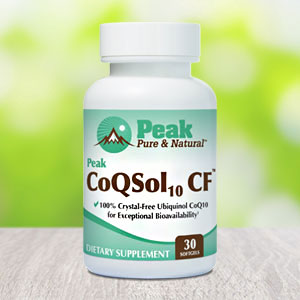Get Easy Health Digest™ in your inbox and don’t miss a thing when you subscribe today. Plus, get the free bonus report, Mother Nature’s Tips, Tricks and Remedies for Cholesterol, Blood Pressure & Blood Sugar as my way of saying welcome to the community!
The essential omega-3 fatty acids

Inflammation, heart disease and oxidized cholesterol threaten the life and health of Americans. But all three of these conditions are preventable.
A healthy diet and ample exercise can fend these off, though our typical American lifestyle habits stand in the way.
The good news: Increasing your omega-3 fatty acids, in food and supplements, naturally reduces pain, inflammation, coronary heart disease risk and unhealthy cholesterol developments.
What Are Omega-3 Fatty Acids?
The omega-3s are a family of fatty acids that are polyunsaturated. They are “good for you” fats. Three such fats make up the omega-3s: ALA (alpha-linolenic acid), EPA (eicosapentaenoic acid) and DHA (docosahexaenoic acid). This trifecta of goodness is said to be “essential” to your health, with numerous studies showing its effectiveness in lowering triglyceride levels, improving cardiovascular health, reducing pain and inflammation and helping with stroke. After vetting such claims, the Food and Drug Administration (FDA) has awarded EPA and DHA “qualified health claims” status.
Omega-3 fatty acids, found principally in fatty fish, fish oil and krill oil, have been shown to convey several core health benefits. This includes naturally reducing and preventing inflammation and pain, thrombosis (blood coagulation) and irregular heartbeats. It is believed that these benefits are the result of omega-3’s ability to balance the body’s production of prostaglandins. Prostaglandins are hormone-like substances produced naturally in your body that are thought to manage inflammation and pain.
Consider how each of the three essential fatty acids work.
The Essential 3: ALA, DHA, EPA
ALA is a short-chain fatty acid that does not convert well into useful substances in the body. However, it can be converted into other so-called long-chain fatty acids, like EPA and DHA — though only in low amounts of about 1 percent. Getting ALAs via food and supplements is necessary, but you really need to focus on your intake of EPA and DHA.
EPA is abundant in oily fish and some algae, like spirulina, and converts into prostaglandins. In addition to helping alleviate pain and inflammation, prostaglandins are also essential to cardiovascular health.
DHA is the main fatty acid that goes into brain cells and is essential to the proper functioning of the eyes and nervous system as well as the brain. Like EPA, DHA is also found in abundance in oily fish and some algae. Low levels of DHA have been associated with depression, chronic pain, dementia and Alzheimer’s disease.
Omega-3 Sources
Taking an omega-3 supplement is a fast and easy way to ensure that you get enough of these essential fatty acids into your body on a daily basis. Additionally, there are quite a few food sources that contain them (fatty fish), and altering your diet is a great overall strategy to get these nutrients. Remember: Your body does not produce the omega-3s on its own and requires that you consume food or supplements to get them.
ALA is found in such food sources like dark-green leafy vegetables, flaxseed, linseeds, hemp seeds, pumpkin seeds, canola oil, walnuts (and walnut oil) and soybeans. Since ALA is not readily usable in the body, it is converted to EPA and DHA for use.
DHA is found in seafood, algae and coldwater fish such as salmon, sardines and albacore tuna.
EPA is found in oily fishes like salmon, sardines, cod liver, herring, mackerel and halibut.
To help Americans get enough omega-3s, many food suppliers now enrich their eggs. That is, they include algae and/or flaxseed in the diet of their hens to produce an egg that is rich in omega-3s. These omega-3-enriched eggs provide 20 percent of the recommended amounts of ALA and 25 percent of EPA and DHA.
How Much Is Safe To Take?
Many studies on omega-3 fatty acids demonstrate that 500mg of EPA and DHA daily are safe and effective dosages. ALA is generally taken at about 1.5g per day.
These numbers are good for prevention and reduction of symptoms that are associated with low omega-3 in the blood. Additionally, the American Heart Association suggests 1 gram per day of EPA and DHA. They also suggest that two to four grams of EPA+DHA per day can lower triglycerides 20 to 40 percent.
If you experience loose stools, reduce your daily consumption to the level where your stools are solid. And it is advised that before you have dental work or surgery, refrain from taking omega-3s a few days before because of their anti-blood-clotting action.
Editor’s note: Have you heard of EDTA chelation therapy? It was developed originally to remove lead and other contaminants, including heavy metals, from the body. Its uses now run the gamut from varicose veins to circulation. Click here to discover Chelation: Natural Miracle for Protecting Your Heart and Enhancing Your Health!














